How to Organize Office Furniture in 2025?
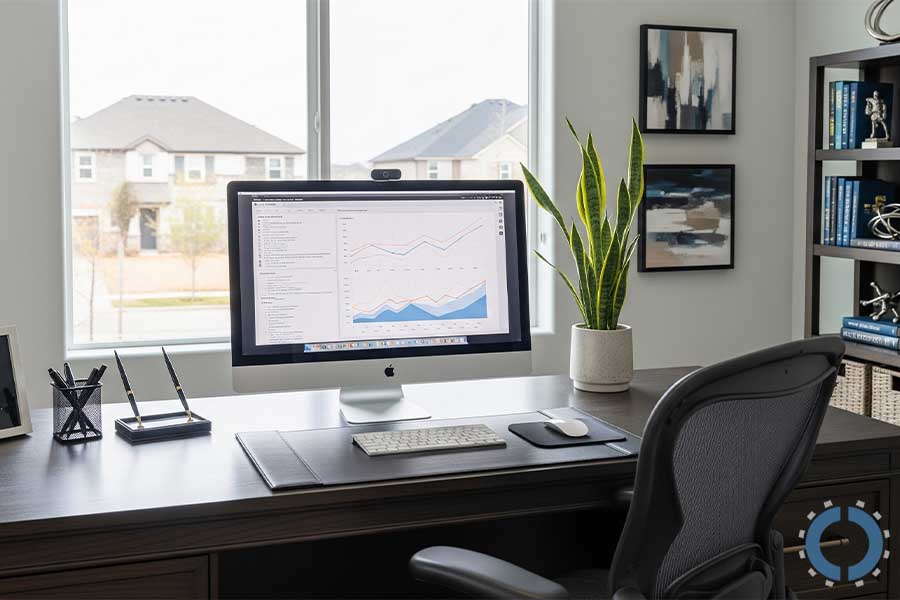
If you walked into your office right now, what would be the first thing that would make you feel?
Crowded, disorganized, and lacking space or an organized, comfortable, and inspiring environment?
The reality is that in 2025, how you arrange your office furniture will directly impact productivity, employee health, and even your brand identity.
Now the question is: How to Organize Office Furniture in 2025?
In 2025, organize office furniture by using modular layouts for flexibility, ergonomic desks and chairs for comfort, zoned spaces for focus and collaboration, smart storage to reduce clutter, and biophilic elements like plants and natural light to boost well-being.
Employees in most businesses today operate in a hybrid environment, so they need more flexibility and expect their work environment to be as comfortable and modern as their home office.
Therefore, organizing commercial office furniture Houston should not be considered just about arranging desks and chairs, but rather as a strategy to improve focus, increase engagement, save space, and utilize new technologies.
In this article, you’ll learn exactly how to set up your office in 2025 to maximize productivity and comfort for your team, while keeping up with future technology and trends.
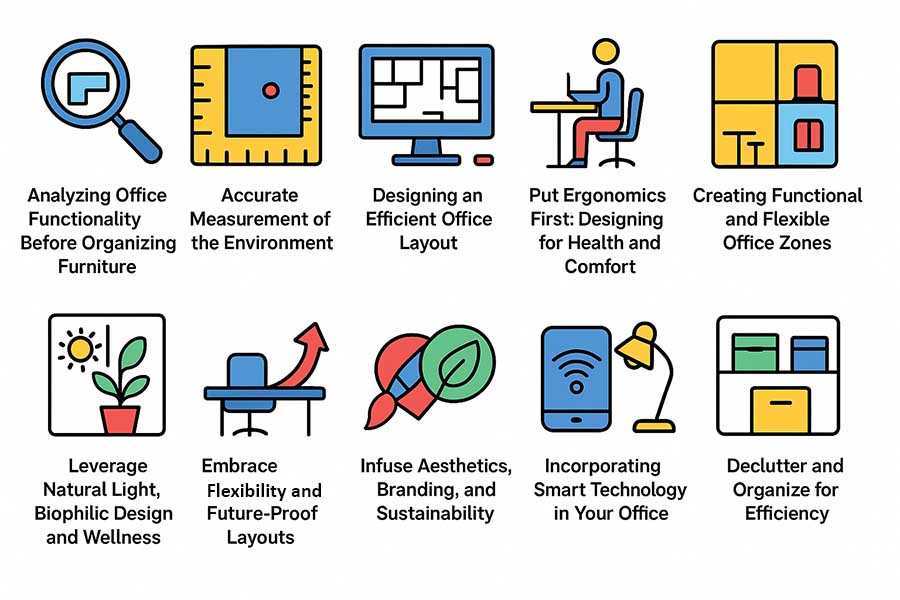
1. Analyzing Office Functionality Before Organizing Furniture
In how to organize office furniture, before taking any action, you must determine what role your office space is going to play.
If the office is designed for individual work and concentration, you need separate desks and private office cubicles so people can focus on their work without distractions.
But if the main goal is teamwork and group projects, shared desks, open meeting rooms, and interactive spaces become more important.
Many businesses in 2025 will follow a hybrid model, meaning part of the team works in person and part works remotely.
On the other hand, each team has a different way of working, and this difference must be considered in the design of the space.
Short, quick meetings can take place around small round tables or standing spaces, while comfortable areas with sofas or soft chairs provide a perfect environment for relaxing or brainstorming.
2. Accurate measurement of the environment
Accurately measuring your office space is an important step that is often overlooked.
You should have a complete map of the environment before buying or moving furniture.
This plan should include the location of doors, windows, columns, and other fixed elements.
Electrical outlet placement, cable routing, and internet access should also be considered, as these can affect the placement of desks or equipment.
Additionally, employees’ movement through the space should be unobstructed; bulky furniture or its improper placement can cause clutter and reduce efficiency.
3. Designing an Efficient Office Layout
Before you move office furniture and equipment or order new furniture, you need to first digitally design the office layout.
Software like CAD, 3D modeling, or even simple online tools help you try out different designs before implementing them.
This not only saves time and energy, but also gives you a clear picture of the final result.
Using these tools, you can simulate the size of furniture, how it is placed, and even lighting to ultimately choose the best layout.
On the other hand, employees should be able to move freely between desks, meeting rooms, and common spaces without encountering obstacles.
Open and secluded paths make the space seem larger and more organized, reduce people’s stress, and increase environmental safety.
Modern offices in 2025 should both support team collaboration and allow for individual focus.
For this reason, the office layout should be a balanced mix of open spaces and private areas.
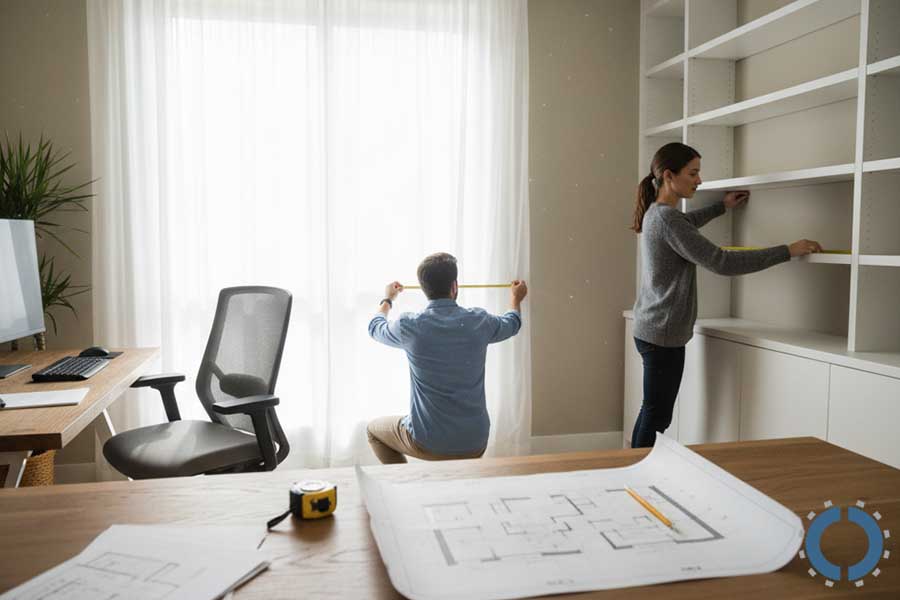
4. Put Ergonomics First: Designing for Health and Comfort
One of the most important principles in modern office layout is to pay attention to employee health.
Using height-adjustable desks, such as sit–stand desks, allows people to switch between sitting and standing throughout the day, preventing problems such as back pain or muscle fatigue.
Additionally, ergonomic office chairs Houston with adjustable backrests and lumbar support help employees maintain a natural spine position and reduce strain on the body.
The location of the monitor also has a direct impact on body posture and eye fatigue.
The monitor should be positioned at eye level, or slightly below, to prevent the user from bending forward or tilting their head upward.
On the other hand, improper lighting can be just as harmful as a non-standard chair or desk, negatively impacting your health and causing eye fatigue.
The best solution is to combine natural light with artificial light.
In how to organize office furniture, place desks near windows to make the most of daylight, and use adjustable table lamps or ceiling lights to reduce eye strain in the evening or in dimly lit environments.
5. Creating Functional and Flexible Office Zones
To create an efficient office for your employees, you need to divide the space into specific sections.
Each area should have a specific function; for example, workstations for daily focus, storage areas for organizing equipment and documents, rooms or phone booths for private calls, and rest areas for employees to regain energy.
Organizing the office into functional zones allows employees to transition easily between tasks, improving workflow and boosting overall productivity.
Using multipurpose furniture also increases the flexibility of the office space.
Folding tables or movable cabinets allow the space to be easily transformed or opened up for group meetings when needed.
This type of furniture is especially useful in small offices or shared spaces, helping to keep the environment neat and organized.
Modern offices need to be able to respond quickly to changes and different needs.
Modular systems allow you to reconfigure partitions, desks, or storage spaces with minimal time and cost.
6. Leverage Natural Light, Biophilic Design, and Wellness
Natural light is one of the most important factors in increasing employee productivity and health.
In how to organize office furniture, placing tables near windows allows us to make the most of daylight.
Also, using glass, mirrors, or reflective surfaces can spread natural light throughout the environment, making the space appear brighter and more open.
Incorporating plants and natural materials is crucial for boosting employee morale and productivity.
Biophilic design involves the use of plants, wood, and other natural elements in the office.
Research shows that the presence of plants and natural elements reduces stress, increases focus, and improves employee creativity.
Even a few small pots or a green wall can make a significant difference in the feel of the environment.
Spaces for relaxation and informal interaction are also very important.
Designing areas like a cafe or lobby with soft and comfortable furniture allows short conversations, informal meetings, and group creativity.
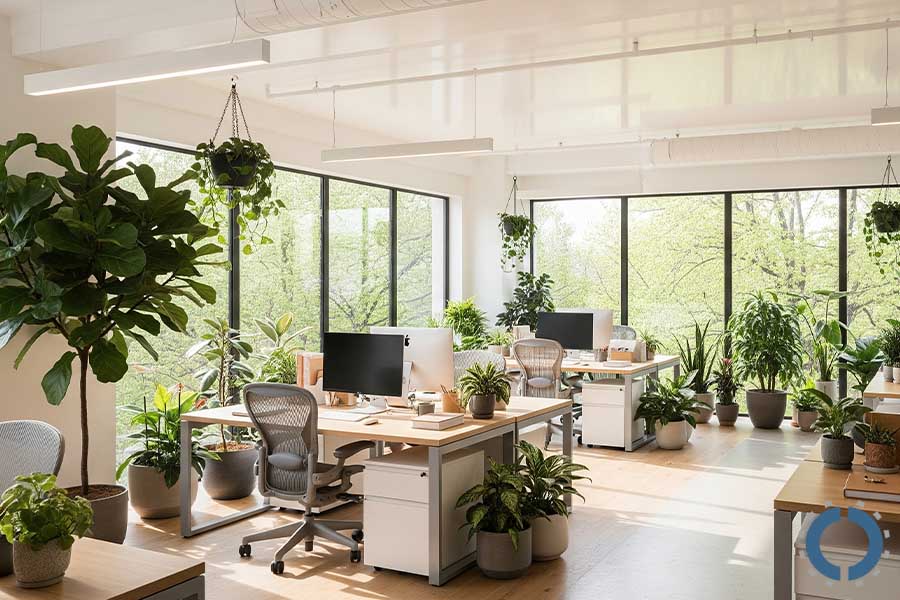
7. Embrace Flexibility and Future-Proof Layouts
One of the principles of modern office design in 2025 is workspace flexibility.
Using modular, multi-purpose furniture allows you to quickly change the office layout, rearrange desks and shelves, and tailor the environment to daily needs or specific projects.
The office space should always be prepared for possible changes.
Open walkways and spaces not only streamline employee movement, but also allow new equipment, additional desks, or innovative technologies to easily fit into the environment without making the space feel cluttered or cluttered.
Offices should be designed to adapt as the team grows or work needs change.
This means the office plan should be scalable, so that as new employees or projects are added, the existing space can accommodate without the need for a complete renovation.
Such forward-thinking design ensures that the office always remains efficient, flexible, and adaptable to the organization’s long-term needs.
8. Infuse Aesthetics, Branding, and Sustainability
To become a professional business, you need to design your office to reflect your brand personality.
Choosing colors, shapes, and design elements that match the brand, in addition to visual beauty, creates a sense of belonging and cohesion among employees and presents a positive image of the organization to clients and customers.
Also, choosing products made with recycled materials, bamboo, or FSC-certified materials not only helps preserve the environment but also demonstrates the company’s values and social responsibility.
9. Incorporating Smart Technology in Your Office
In how to organize office furniture, one of the simplest and most effective ways to maintain order in the office is to properly manage cables.
If not properly organized, electrical and network cables can create clutter and detract from the beauty of the environment.
Using cable channels, clamps, and concealment systems keeps the workspace clean and tidy and increases employee safety.
The use of smart desks with wireless charging also plays an important role in modern offices.
Adjustable desks with height memory allow for easy transitions between sitting and standing.
Integrated USB and power ports and wireless charging capabilities also allow employees to charge their devices without the clutter and extra cables.
Adjustable, intelligent lighting reduces eye strain depending on the time of day and environmental needs.
Digital check-in and space management systems also increase the efficiency of shared spaces and create a more convenient and professional user experience for employees.
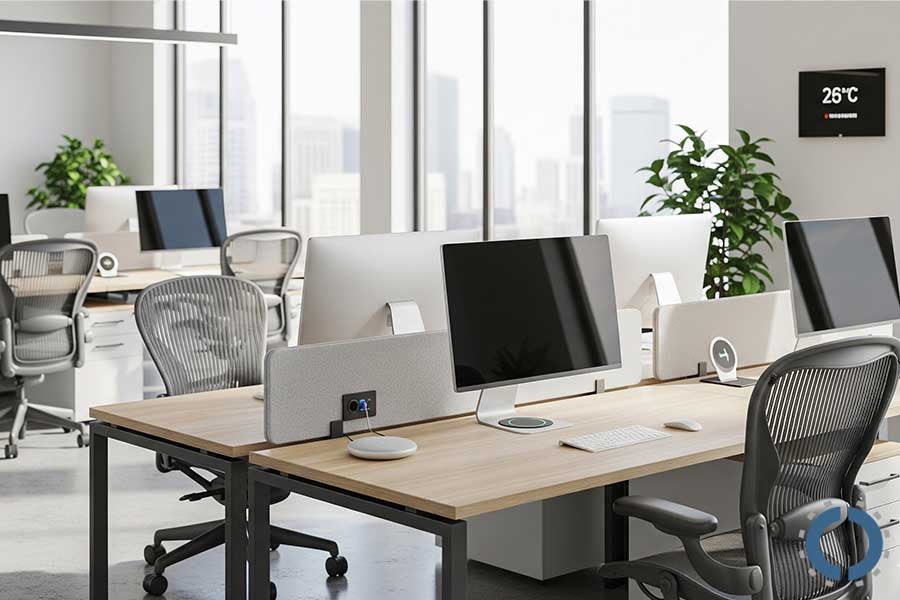
10. Declutter and Organize for Efficiency
To maintain order and productivity in the office, using standard organizational methods is very effective.
Using vertical shelves and cabinets, drawer dividers, and labeled bins ensures that everything has its place and is easily accessible to employees.
This method reduces the time spent searching for items and increases productivity.
Setting a daily or weekly schedule for tidying up your desk, shared spaces, and work tools helps maintain order.
These routines ensure that the office is always tidy, efficient, and ready for daily activities.
11. Common Mistakes to Avoid
- Overcrowding the office with unnecessary furniture: One of the biggest mistakes in office organization is filling the space with extra desks, chairs, or cabinets.
This makes the environment crowded and messy, disrupting employee flow and reducing productivity.
- Ignoring ergonomics: Also, employee health should not be sacrificed for beauty or space density.
Placing desks and chairs without considering ergonomics can cause back pain, fatigue, and decreased concentration.
Also, blocking corridors and main movement routes, in addition to causing inconvenience, also increases safety risks.
- Neglect of design and employee comfort: Ignoring design that is consistent with the brand, colors, and style of the environment can reduce employee feelings of belonging and motivation.
Also, not paying attention to the comfort and well-being of the team leads to reduced job satisfaction and productivity.
Conclusion
Organizing office furniture in 2025 means creating a workspace that combines comfort, productivity, flexibility, technology, health, sustainability, and aesthetics all at once.
A carefully designed and tailored workspace layout increases productivity, enhances employee satisfaction, stimulates creativity, and best reflects your brand personality.
In the article How to Organize Office Furniture, we said that to start transforming your workspace, first measure your office space accurately, invest in ergonomic and modular furniture, and use digital tools to plan and visualize the ideal layout.
By taking these steps, you can create an office that is ready for the future; one where employees thrive, collaboration flows smoothly, and every part of the environment is purposeful and efficient.
Simply put, how you organize your office furniture in 2025 will determine not only the appearance of your office but also the experience, health, and performance of your team.

John Ofield is the owner of Collaborative Office Interiors. Houston’s trusted source for modern and commercial office furniture, office cubicles, demountable walls, office desks and tables, and complete workspace solutions. With more than 40 years of experience, he combines deep product knowledge with hands-on space-planning expertise to create ergonomic, productivity-focused work environments for businesses across Southeast Texas.


